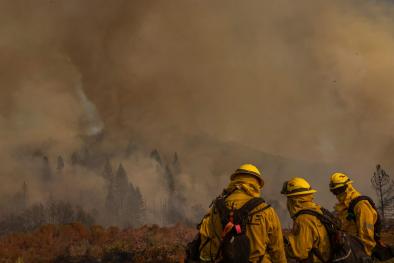The Effects of Historical Housing Policies on Resident Exposure to Intra-Urban Heat: A Study of 108 US Urban Areas
Study key findings & significance
- "[I]n nearly all cases, those neighborhoods located in formerly redlined areas — that remain predominantly lower income and communities of color — are at present hotter than their non-redlined counterparts.”
- “‘D’-rated areas are now on average 2.6° C warmer than ‘A’-rated areas. Areas assigned a ‘hazardous’ HOLC [Home Owners' Loan Corporation] security rating in U.S. cities exhibit quantitatively less coverage by tree canopy and more coverage by impervious surfaces in the present decade.”
Author quotes
“It really underscores how decisions made almost 100 years ago are playing out as an acute climate inequity today."
Jeremy Hoffman, lead author and Portland State University Professor of Urban Studies and Planning
Abstract
The increasing intensity, duration, and frequency of heat waves due to human-caused climate change puts historically underserved populations in a heightened state of precarity, as studies observe that vulnerable communities—especially those within urban areas in the United States—are disproportionately exposed to extreme heat. Lacking, however, are insights into fundamental questions about the role of historical housing policies in cauterizing current exposure to climate inequities like intra-urban heat. Here, we explore the relationship between “redlining”, or the historical practice of refusing home loans or insurance to whole neighborhoods based on a racially motivated perception of safety for investment, with present-day summertime intra-urban land surface temperature anomalies. Through a spatial analysis of 108 urban areas in the United States, we ask two questions: (1) how do historically redlined neighborhoods relate to current patterns of intra-urban heat? and (2) do these patterns vary by US Census Bureau region? Our results reveal that 94% of studied areas display consistent city-scale patterns of elevated land surface temperatures in formerly redlined areas relative to their non-redlined neighbors by as much as 7 °C. Regionally, Southeast and Western cities display the greatest differences while Midwest cities display the least. Nationally, land surface temperatures in redlined areas are approximately 2.6 °C warmer than in non-redlined areas. While these trends are partly attributable to the relative preponderance of impervious land cover to tree canopy in these areas, which we also examine, other factors may also be driving these differences. This study reveals that historical housing policies may, in fact, be directly responsible for disproportionate exposure to current heat events.
Related Content



